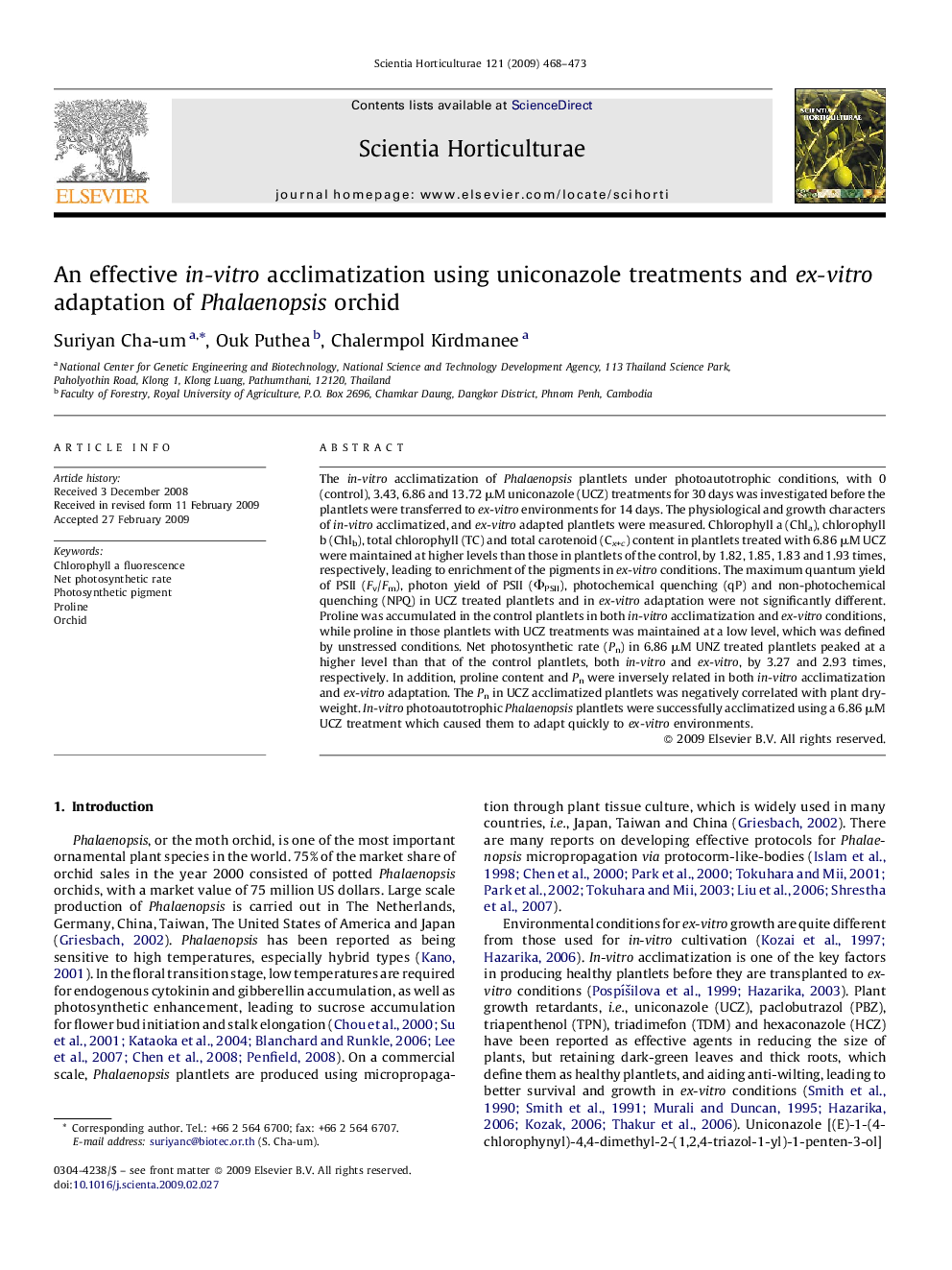| Article ID | Journal | Published Year | Pages | File Type |
|---|---|---|---|---|
| 4568360 | Scientia Horticulturae | 2009 | 6 Pages |
The in-vitro acclimatization of Phalaenopsis plantlets under photoautotrophic conditions, with 0 (control), 3.43, 6.86 and 13.72 μM uniconazole (UCZ) treatments for 30 days was investigated before the plantlets were transferred to ex-vitro environments for 14 days. The physiological and growth characters of in-vitro acclimatized, and ex-vitro adapted plantlets were measured. Chlorophyll a (Chla), chlorophyll b (Chlb), total chlorophyll (TC) and total carotenoid (Cx+c) content in plantlets treated with 6.86 μM UCZ were maintained at higher levels than those in plantlets of the control, by 1.82, 1.85, 1.83 and 1.93 times, respectively, leading to enrichment of the pigments in ex-vitro conditions. The maximum quantum yield of PSII (Fv/Fm), photon yield of PSII (ΦPSII), photochemical quenching (qP) and non-photochemical quenching (NPQ) in UCZ treated plantlets and in ex-vitro adaptation were not significantly different. Proline was accumulated in the control plantlets in both in-vitro acclimatization and ex-vitro conditions, while proline in those plantlets with UCZ treatments was maintained at a low level, which was defined by unstressed conditions. Net photosynthetic rate (Pn) in 6.86 μM UNZ treated plantlets peaked at a higher level than that of the control plantlets, both in-vitro and ex-vitro, by 3.27 and 2.93 times, respectively. In addition, proline content and Pn were inversely related in both in-vitro acclimatization and ex-vitro adaptation. The Pn in UCZ acclimatized plantlets was negatively correlated with plant dry-weight. In-vitro photoautotrophic Phalaenopsis plantlets were successfully acclimatized using a 6.86 μM UCZ treatment which caused them to adapt quickly to ex-vitro environments.
